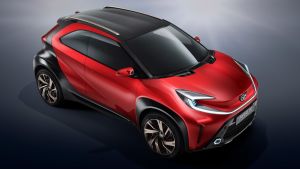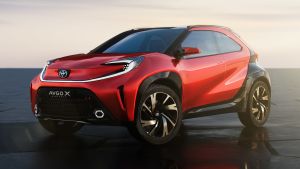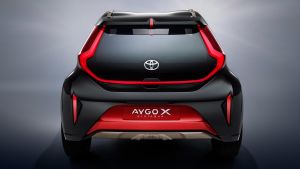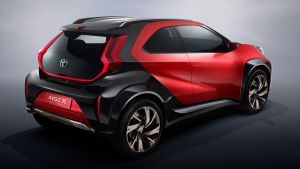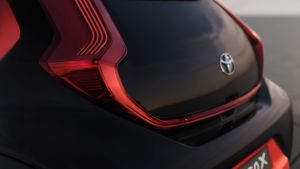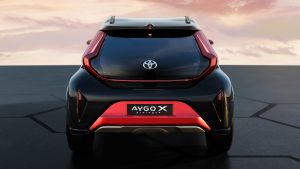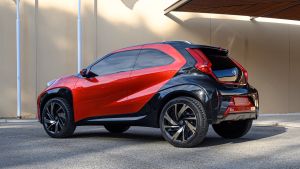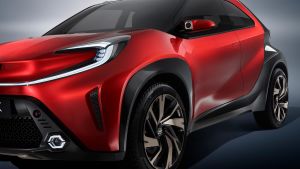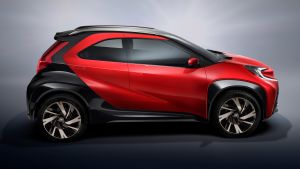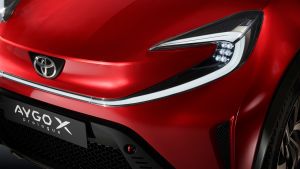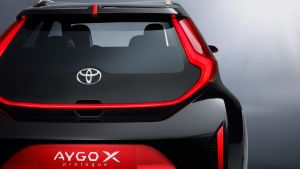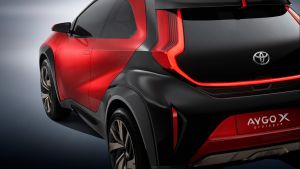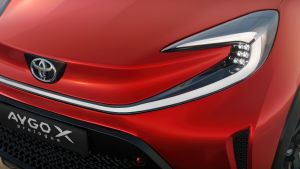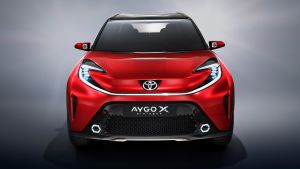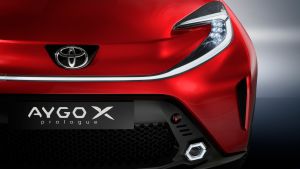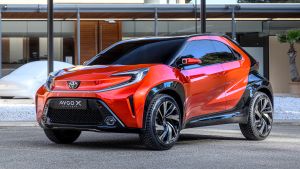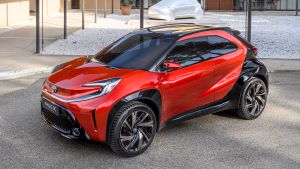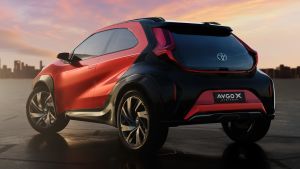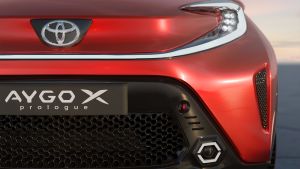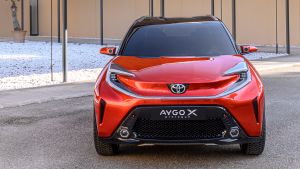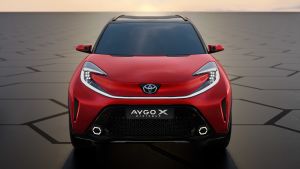Toyota recently confirmed that it is going to buck the industry trend by staying in the city car class with a successor to its current Aygo. And now the Japanese brand has given us a preview of how the new model could look, with the Toyota Aygo X prologue.
The new concept shows how Toyota believes its A-segment model can become a crossover, while still keeping its small dimensions and, as a conventional petrol-powered vehicle, a lower price than baby EVs. The Aygo X prologue is a little longer and taller than the current Aygo, at 3,700mm and 1,500mm respectively. Its wheelbase stretches too, by a useful 90mm, to 2,340mm, potentially freeing up extra space in the cabin.
The overall look is more funky and slightly more aggressive than the current Aygo’s - a reflection of the design team’s impression that the trend in the city car market has been to make designs too ‘cute’. “We’ve used the word ‘spice’ during development,” said Ian Cartabiano, chief of the ED2 design facility in France where the concept was created. “Getting this attitude into an A-segment car is really cool. When you see this car you smile; you might smirk.”
Toyota hasn’t officially confirmed that the X prologue is a preview of a production model. But the company revealed recently that it is working on a new generation of city car, and that it will be based on the same TNGA GA-B platform as the Yaris. The company says the Aygo X prologue shows “a new vision for the A-segment” and Cartabiano says it is indeed based on the GA-B architecture. He also confirmed to Auto Express that while no pictures of the cabin have been released, the concept’s interior has already been designed.
It’s likely, then, that the Aygo X prologue is a pretty close preview of the production model - although some elements, such as the wide wheelarches and notably the 19-inch wheels (a full four inches larger than on the current car), may be toned down slightly for the final model. The overall stance, though, is likely to be retained, not least because Cartabiano says the crossover shape was decided early in the car’s rapid development (work on it only started a year ago), and he is a fan of what he calls its “bad-ass” looks.
“When we studied the future user base, where A-segment [city cars] can go in the future, more and more customers are wanting the ability to get out of urban environments,” Cartabiano said. “So we started thinking that to make the segment more relevant, keep it fresh and offer something new, wouldn’t it be interesting to bring in some of those crossover cues?
“Sometimes when you see other brands trying to take the A-segment vehicles and turn them into an all-road, they stick with traditional cladding - big bumpers, and so forth. We didn’t need to do that. We could imply the go-anywhere nature of this car without being too traditional.”
There are existing Aygo cues at the front end and particularly the rear, where the ‘open hexagon’ tail-lights seem to hold the simple glass hatchback. The profile, meanwhile, is dominated by the contrast colour, wraps around the base of the rear doors in a move that showcase the manufacturing processes and the points where metal doors are surrounded by plastic bumpers. Roof rails, which line up with the top of the tail-lights, help to accentuate the car’s height while adding a further subtle SUV reference.
The biggest difference for existing Aygo owners to notice could well be the X prologue’s ‘H-point’ - the height of the passengers’ hips in the seats. It’s higher than in the current car - roughly equivalent, in fact, to the position in Toyota’s forthcoming Yaris Cross small SUV. Cartabiano says this brings a number of benefits. “The higher hip point makes getting in and out of the vehicle easy,” he told us. “It improves visibility, so it’s great for parking in urban environments, and driving on country roads. It’s also better for loading items into the rear hatch, because lifting the floor makes it more natural for arm’s length.”
The next Aygo will be built in Kolin, Czech Republic - the same plant that has produced the existing model alongside its sister vehicles, the Peugeot 108 and Citroen C1. The French offerings are going out of production and Toyota has assumed total control of the factory, investing more than £130m to prepare it for the GA-B platform. That work is likely to take several months, so we shouldn’t expect the next Aygo until the first half of 2022 at the earliest.
The new model is likely to focus on affordability, so it will almost certainly be offered with a conventional three-cylinder petrol engine, as well as potentially a version of Toyota’s smallest hybrid powertrain. That should help to keep the price to roughly the same level as the existing Aygo, starting from around £13,500.
What will the new Toyota Aygo have to beat? These are the best city cars on sale right now...
